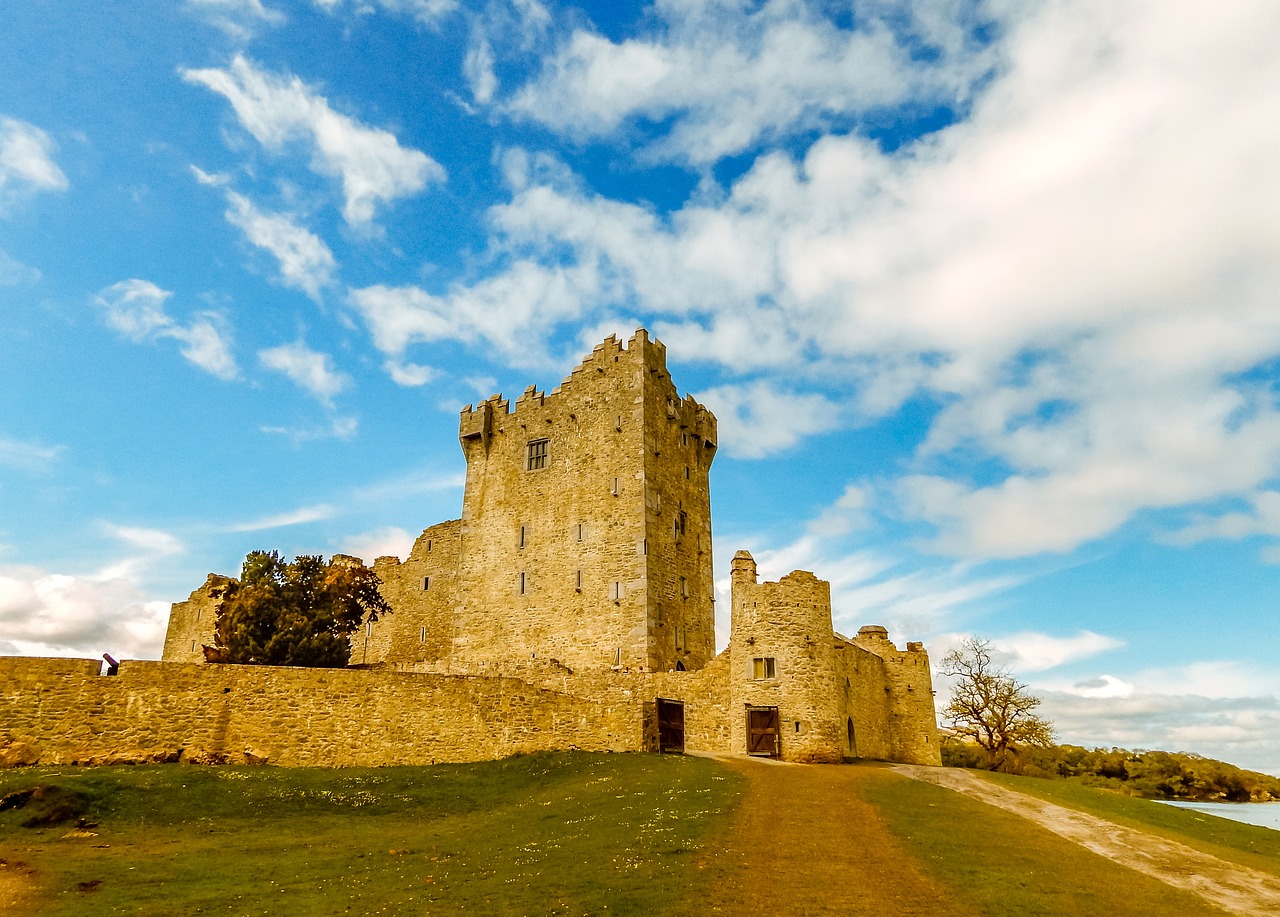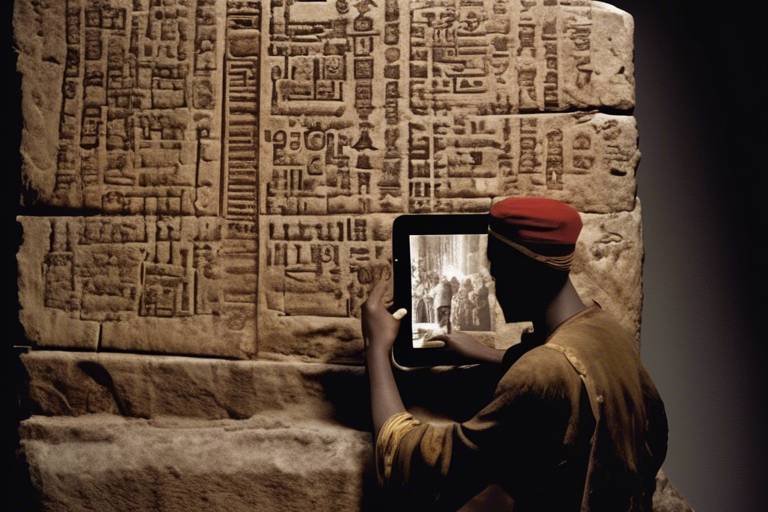Exploring the Importance of Documentation in Heritage Protection
Heritage protection is a critical aspect of preserving the rich cultural legacy of communities around the world. Documentation plays a pivotal role in this endeavor, serving as a time capsule that captures the essence of historical sites and traditions for future generations to cherish and learn from. By meticulously recording and cataloging heritage sites, we not only safeguard their authenticity but also ensure that their significance is recognized and respected.

Preserving Cultural Identity
Preserving cultural identity through documentation is like capturing the essence of a community's soul in a time capsule, ensuring that its rich tapestry of traditions and practices remains alive for future generations to cherish and learn from. By meticulously documenting cultural heritage sites, we are not just preserving physical structures but safeguarding the very heart and spirit of a community, allowing its unique identity to endure the test of time.

Legal Protection and Conservation
When it comes to safeguarding our rich cultural heritage, legal protection and conservation efforts play a pivotal role. Proper documentation serves as the backbone of these endeavors, ensuring that heritage sites are not only legally recognized but also effectively preserved for future generations to cherish and learn from.
Documentation is more than just paperwork; it is a shield that guards against the threats of neglect, destruction, and unauthorized alterations to valuable heritage sites. By establishing a legal framework based on thorough documentation, authorities can enforce regulations that protect these sites from encroachment and misuse.
Moreover, documentation forms the basis for developing comprehensive conservation strategies that aim to maintain the authenticity and integrity of heritage sites. Through detailed records and assessments, conservationists can identify areas of vulnerability and implement targeted interventions to mitigate risks and ensure the longevity of these cultural treasures.
Imagine documentation as the guardian of our heritage, standing watch to ensure that the legacy of past civilizations remains intact amidst the currents of time. Without proper documentation, heritage sites are left vulnerable to exploitation and degradation, risking the loss of irreplaceable cultural assets that define our collective identity.

Historical Significance
When it comes to heritage protection, understanding the historical significance of sites is paramount. Documenting the history embedded within these places provides a window into the past, offering insights into the events, people, and cultures that have shaped our world. By capturing this historical significance through documentation, we can preserve the stories and legacies that define our collective heritage.
Imagine walking through the ruins of an ancient civilization, with each stone and artifact holding a piece of history waiting to be unveiled. Documentation allows us to piece together the puzzle of the past, connecting dots that span centuries and continents. It is through this historical lens that we can appreciate the significance of heritage sites and the role they play in shaping our present and future.
Furthermore, understanding the historical context of heritage sites helps us appreciate the cultural diversity and richness of our global heritage. Each site tells a unique story, reflecting the beliefs, traditions, and innovations of the societies that once thrived there. By documenting these stories, we ensure that future generations can learn from the past, fostering a deeper appreciation for the complexities of human history.
Historical significance also sheds light on the evolution of societies and civilizations, showcasing the progress and challenges faced by our ancestors. Through documentation, we can trace the trajectory of human development, from ancient settlements to modern metropolises, and understand the lessons learned along the way. This historical perspective not only enriches our understanding of heritage sites but also provides valuable insights into our own cultural identity and collective memory.
In essence, documenting the historical significance of heritage sites is like unraveling a tapestry of human experience, with each thread contributing to the rich fabric of our shared heritage. By preserving these stories and narratives, we ensure that the legacy of the past continues to inspire and educate present and future generations, fostering a deeper appreciation for the importance of heritage protection.

Risk Management
Risk management plays a critical role in the preservation of heritage sites, ensuring their protection against potential threats and vulnerabilities. By systematically identifying, assessing, and addressing risks, documentation enables heritage conservationists to proactively safeguard these valuable assets. Through detailed documentation, experts can evaluate the susceptibility of heritage sites to various risks, including natural disasters, climate change, vandalism, and unauthorized development.
Moreover, documentation facilitates the development of tailored risk mitigation strategies, allowing heritage managers to implement preventive measures and emergency response plans effectively. By understanding the specific vulnerabilities of each site, stakeholders can prioritize conservation efforts and allocate resources efficiently to minimize the impact of potential hazards.
Furthermore, documentation serves as a crucial tool for monitoring and evaluating the condition of heritage sites over time, enabling continuous risk assessment and adaptation of conservation practices. Regular updates to documentation ensure that conservation strategies remain relevant and responsive to evolving threats, thereby enhancing the long-term resilience of heritage assets.

Tourism and Economic Impact
When it comes to heritage sites, the impact of tourism on both the cultural landscape and the local economy cannot be understated. Well-documented heritage sites have the potential to draw in a significant number of tourists, not only enriching their travel experiences but also contributing to the economic development of the surrounding communities.
Imagine walking through the narrow cobblestone streets of an ancient city, surrounded by centuries-old architecture and vibrant cultural traditions. Tourists are often drawn to heritage sites for their historical significance, unique architecture, and immersive cultural experiences. These attractions not only serve as educational opportunities but also create a sense of wonder and awe among visitors, enriching their understanding of different cultures and histories.
Moreover, the economic impact of tourism on heritage sites is substantial. Local businesses, such as restaurants, hotels, and souvenir shops, thrive on the influx of tourists, generating revenue and employment opportunities for the community. Additionally, entrance fees, guided tours, and cultural events held at heritage sites contribute to the preservation and maintenance of these valuable assets, ensuring their longevity for future generations to enjoy.
By attracting tourists from near and far, well-documented heritage sites play a vital role in promoting sustainable development in the region. The revenue generated from tourism can be reinvested into conservation efforts, infrastructure development, and community projects, creating a cycle of growth that benefits both the heritage site and the local population.

Technological Advances in Documentation
In the realm of heritage protection, technological advancements have revolutionized the way we document and preserve cultural treasures. One of the most notable innovations is the utilization of 3D scanning technology, which allows for the creation of detailed digital replicas of heritage sites with unparalleled accuracy. These digital models not only serve as invaluable records for conservation efforts but also enable virtual tours that provide immersive experiences for visitors worldwide. Additionally, the integration of virtual reality (VR) technology has further enhanced documentation practices by offering interactive platforms for exploring heritage sites in a dynamic and engaging manner. Through VR, users can delve into the historical significance of these sites and gain a deeper appreciation for their cultural value.

Community Engagement and Education
Preserving cultural heritage is like safeguarding a treasure trove of memories and traditions, each piece holding a story waiting to be shared with the world. Through meticulous documentation, we can ensure that these invaluable pieces of history are not lost to time but instead cherished and passed down through generations.
Documentation serves as a vital tool in preserving the unique cultural identity of a community. By recording and cataloging traditions, rituals, and practices, we create a legacy that connects the past with the present, allowing us to celebrate our roots and honor our ancestors.
Proper documentation is the cornerstone of legal protection for heritage sites. It provides the necessary evidence to enforce conservation laws and regulations, ensuring that these precious landmarks are preserved for future generations to admire and appreciate.
Delving into the archives of documentation unveils a tapestry of historical significance woven into the fabric of heritage sites. Each document, artifact, or inscription offers a glimpse into the past, enriching our understanding of how these sites have shaped our society and culture over centuries.
Documentation acts as a shield against the unpredictable forces that threaten heritage sites. By assessing risks and implementing preventive measures based on detailed documentation, we can safeguard these treasures from the ravages of natural disasters and human interventions.
Well-documented heritage sites are not just relics of the past but also magnets for tourists seeking to immerse themselves in history. The influx of visitors not only boosts local economies but also fosters sustainable development, creating a harmonious balance between cultural preservation and economic growth.
The evolution of technology has revolutionized the way we document heritage sites. From 3D scanning to virtual reality tours, these innovative tools enhance preservation efforts and engage the public in a dynamic exploration of our shared heritage.
Empowering local communities through active participation in documentation processes nurtures a sense of ownership and pride in preserving their heritage. By involving community members in the preservation journey, we cultivate a deep-rooted connection to the past and inspire future generations to cherish their cultural legacy.
Despite the importance of documentation, various challenges hinder effective preservation efforts. From limited funding and technological constraints to the necessity of interdisciplinary collaboration, overcoming these obstacles requires a concerted effort to ensure the safeguarding of our heritage.
The future of heritage documentation holds exciting possibilities, with the integration of artificial intelligence and big data analytics poised to revolutionize preservation strategies. By harnessing cutting-edge technologies, we can create more comprehensive and efficient methods to protect and celebrate our cultural heritage for years to come.

Challenges in Documentation Practices
When it comes to documenting heritage sites, various challenges can arise, hindering the preservation efforts and comprehensive understanding of these valuable assets. One of the primary obstacles is the issue of funding constraints, as allocating resources for documentation projects can be a significant financial burden. Without adequate funding, heritage sites may not receive the attention they deserve, leading to incomplete or insufficient documentation.
Technological limitations also present a challenge in documentation practices. While innovative tools like 3D scanning and virtual reality have revolutionized the field, not all heritage sites have access to such advanced technology. This disparity can result in uneven documentation standards, with some sites being extensively documented while others are left behind due to technological constraints.
Furthermore, the interdisciplinary nature of heritage documentation can pose challenges in collaboration and coordination among experts from different fields. Archaeologists, historians, conservationists, and technologists must work together to ensure a holistic approach to documentation. However, coordinating these diverse perspectives and expertise can be complex and time-consuming, impacting the efficiency of documentation processes.
In addition, the dynamic nature of heritage sites, subject to environmental changes and human activities, presents a continuous challenge in maintaining up-to-date documentation. Natural disasters, urban development, and tourism can all impact heritage sites, requiring regular updates and monitoring to ensure the accuracy and relevance of documentation over time.
Addressing these challenges in documentation practices requires a concerted effort from stakeholders, including government agencies, non-profit organizations, and local communities. By overcoming funding constraints, leveraging technology effectively, promoting interdisciplinary collaboration, and implementing robust monitoring mechanisms, heritage documentation can be enhanced to ensure the preservation of cultural heritage for future generations.

Future Trends in Heritage Documentation
The future of heritage documentation is poised to be revolutionized by advancements in technology and data analysis. Artificial intelligence (AI) is expected to play a significant role in streamlining the documentation process, enabling faster and more accurate preservation of heritage sites. By harnessing the power of AI algorithms, researchers and conservationists can analyze vast amounts of data to identify patterns, detect anomalies, and predict potential risks to heritage sites.
Furthermore, the integration of big data analytics will allow for a more comprehensive understanding of the complex relationships between various elements of heritage sites. By collecting and analyzing large datasets, experts can uncover hidden insights and trends that may have previously gone unnoticed, leading to more informed decision-making in heritage preservation efforts.
In addition, the use of immersive technologies like augmented reality (AR) and virtual reality (VR) is set to transform how heritage sites are documented and presented to the public. These technologies offer interactive and engaging experiences that bring history to life, allowing visitors to explore and interact with heritage sites in ways never before possible.
Overall, the future of heritage documentation holds immense potential for innovation and progress, paving the way for more effective and sustainable preservation strategies that will safeguard our cultural heritage for future generations to come.
Frequently Asked Questions
- Why is documentation important in heritage protection?
Documentation is crucial in heritage protection as it helps in preserving the unique cultural identity of communities, ensuring their traditions are passed down through generations. It also aids in legal protection, conservation efforts, risk management, and promoting tourism and economic development.
- What role does technology play in heritage documentation?
Technological advances like 3D scanning and virtual reality have revolutionized heritage documentation, making it more efficient and comprehensive. These innovations enhance preservation efforts, public engagement, and contribute to a deeper understanding of historical significance.
- How can local communities contribute to heritage protection through documentation?
Engaging local communities in documentation processes fosters a sense of ownership and pride in heritage sites. This involvement leads to increased awareness, appreciation, and sustainable preservation practices, ensuring the long-term safeguarding of cultural heritage.
- What are the challenges faced in heritage documentation practices?
Challenges in documentation practices include funding constraints, technological limitations, and the need for interdisciplinary collaboration. Overcoming these obstacles is essential for effective preservation and ensuring the integrity of heritage sites for future generations.
- What are the future trends in heritage documentation?
The future of heritage documentation is likely to involve the integration of artificial intelligence and big data analytics for more efficient preservation strategies. These advancements will enable a more comprehensive understanding and management of heritage sites in the digital age.



















